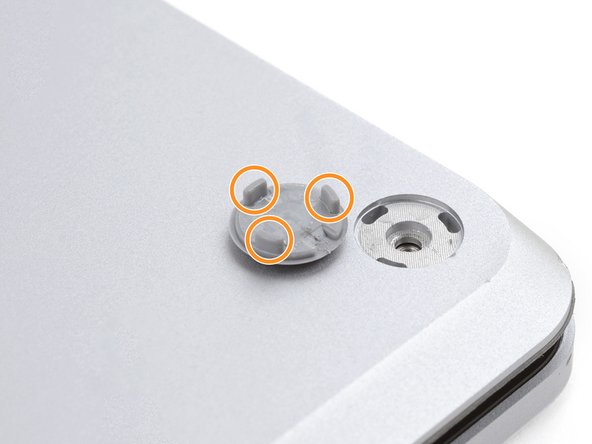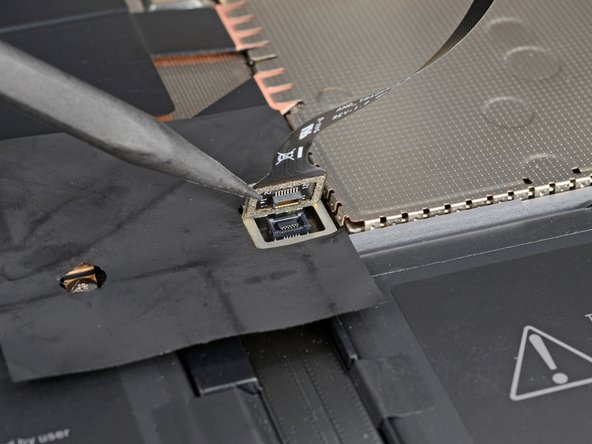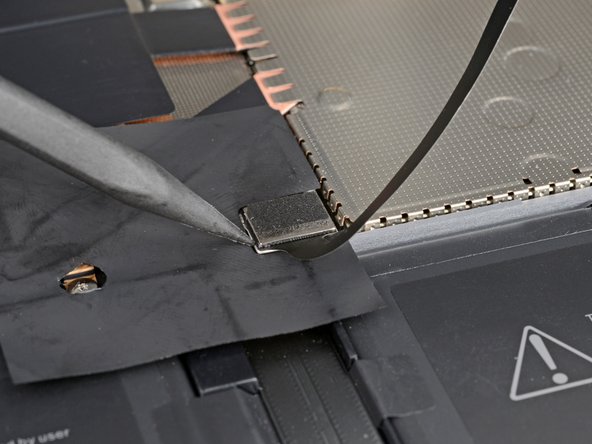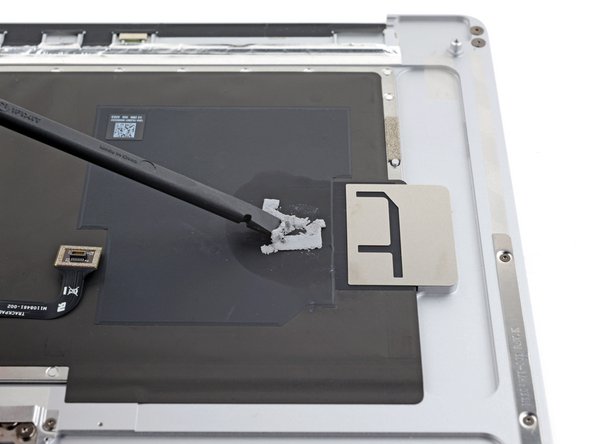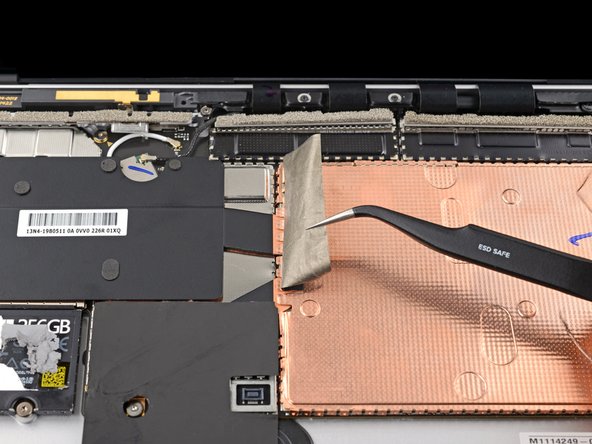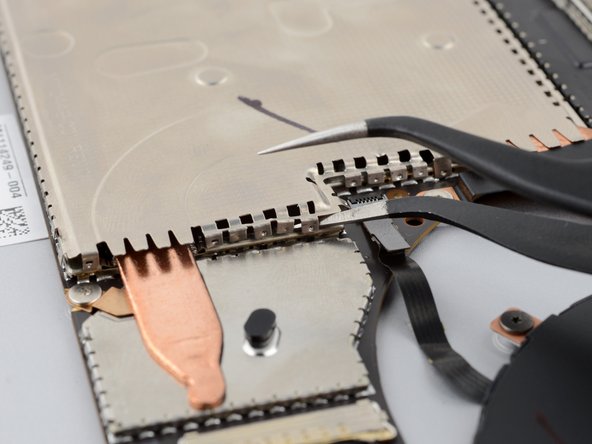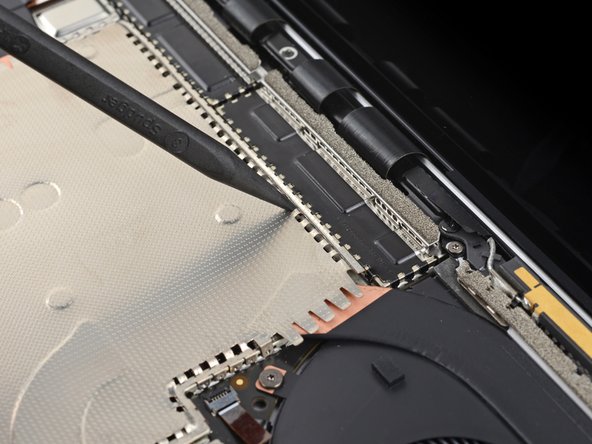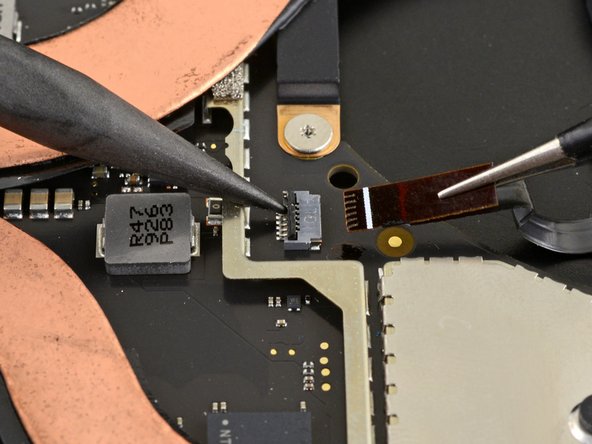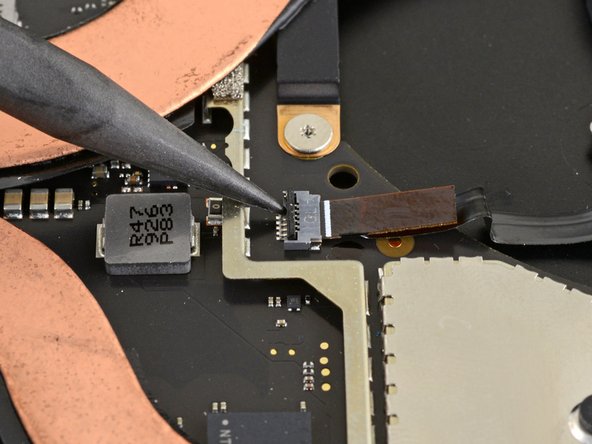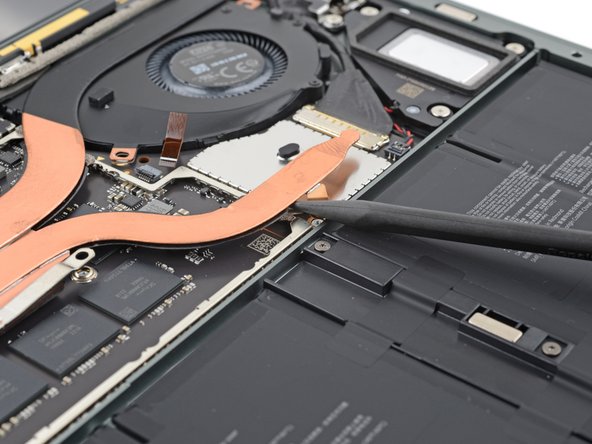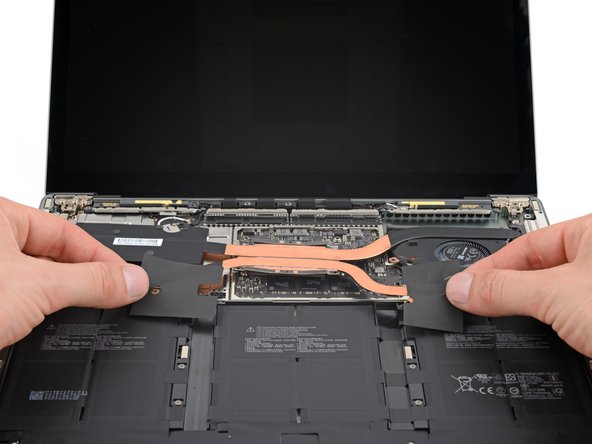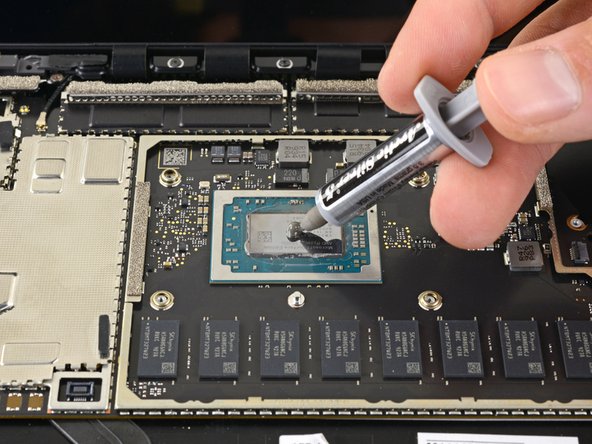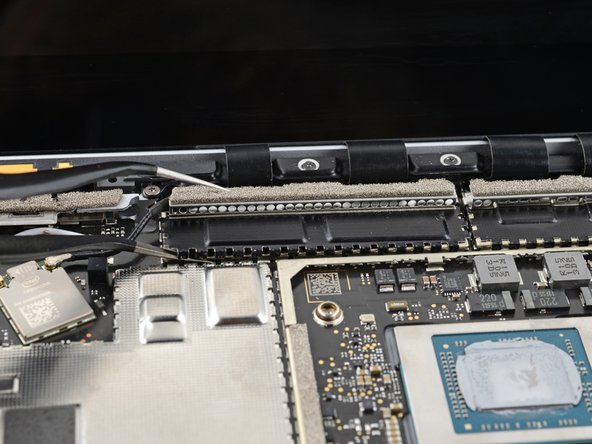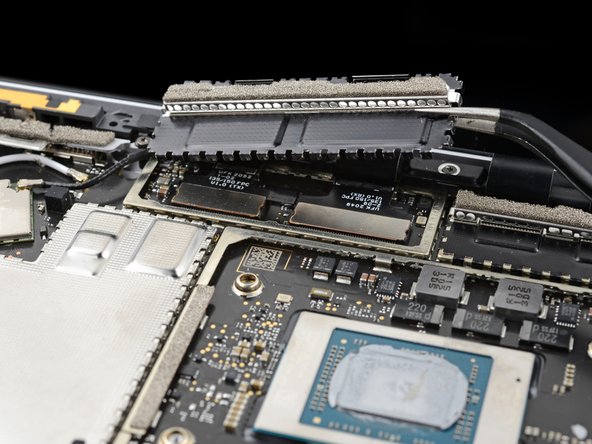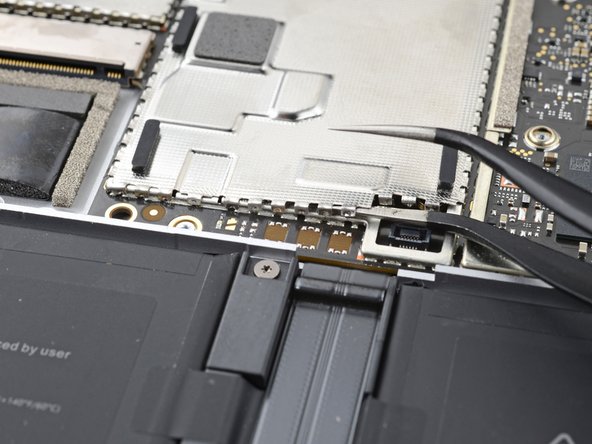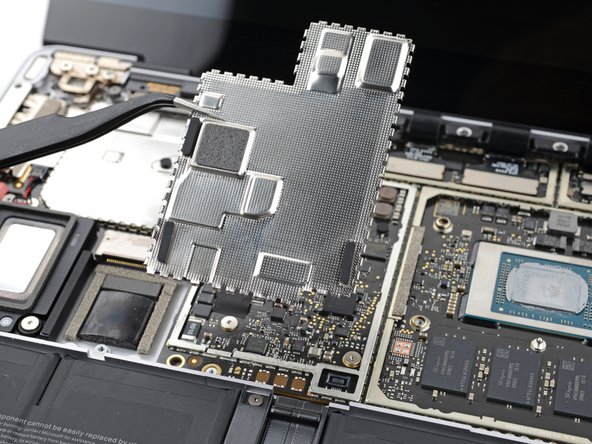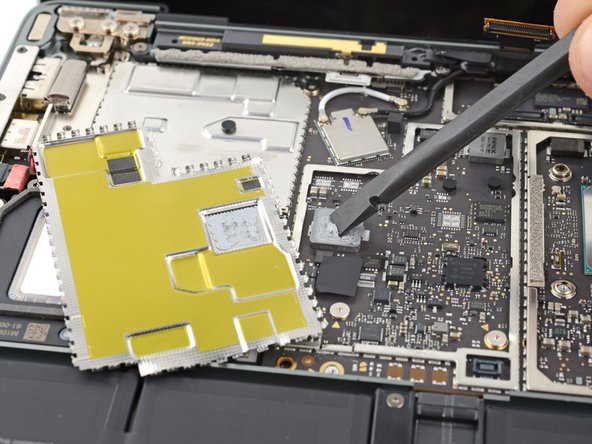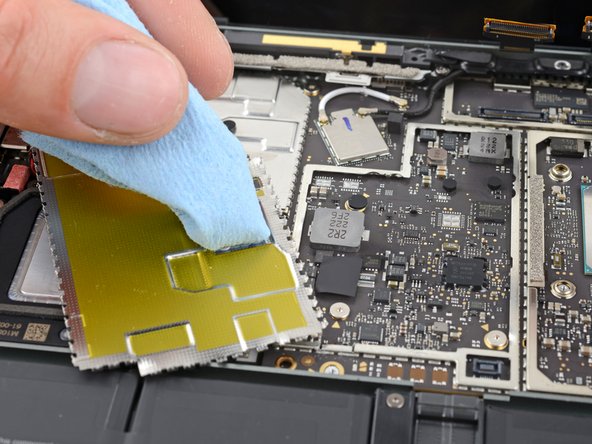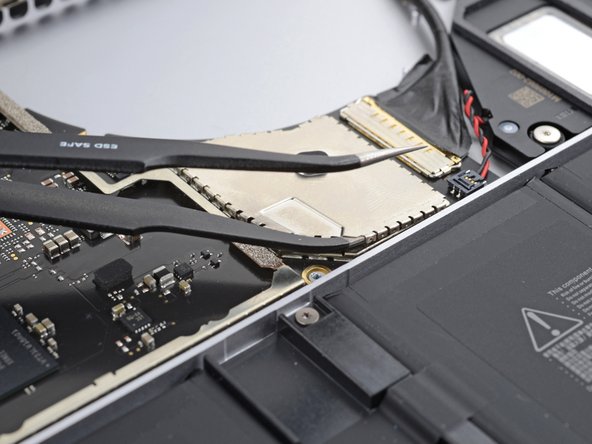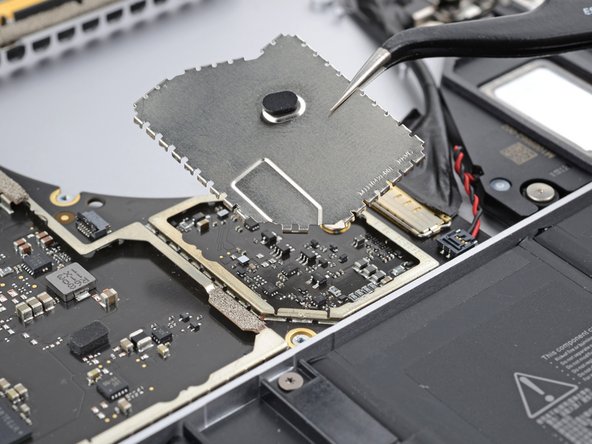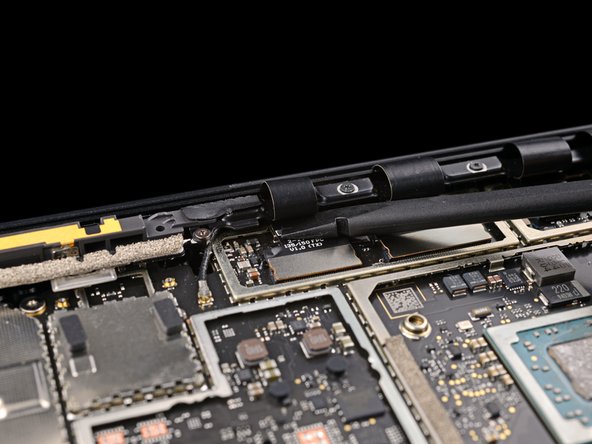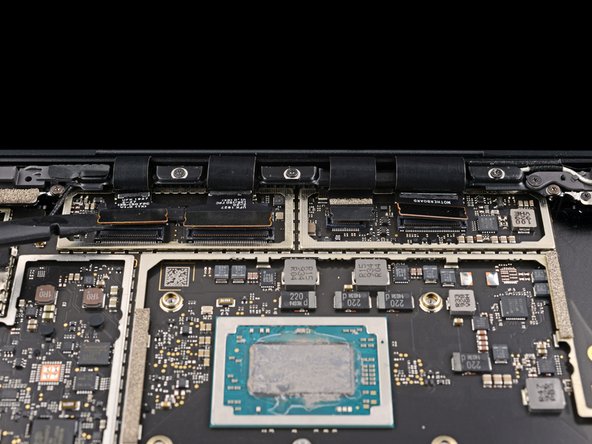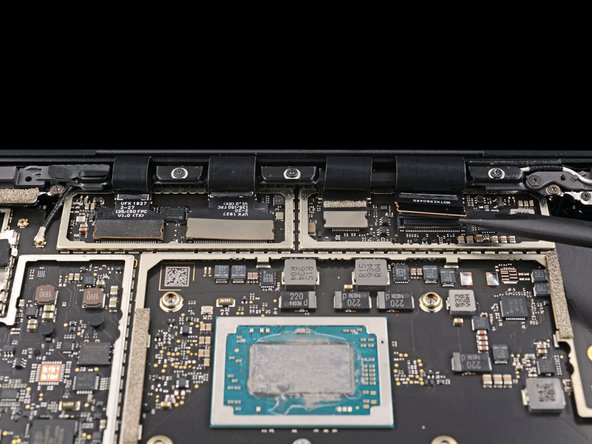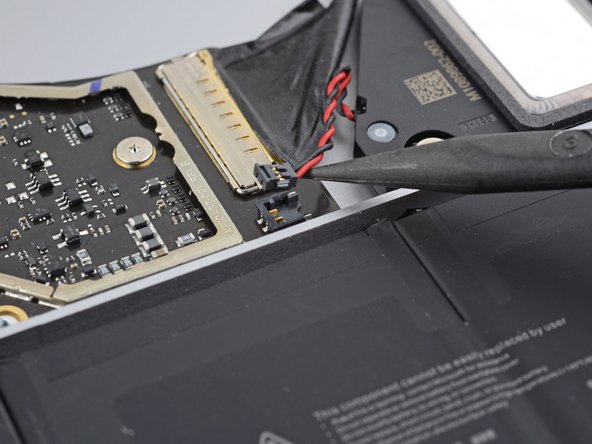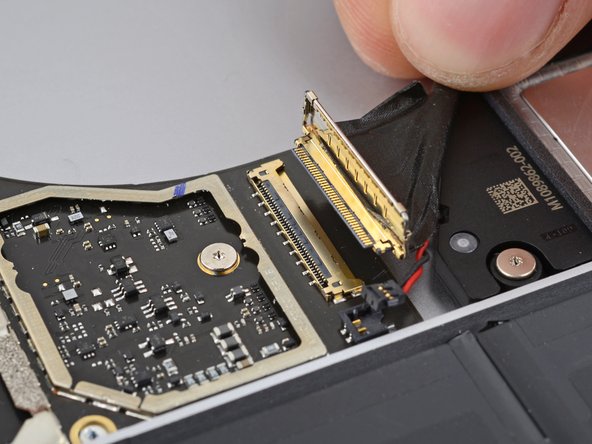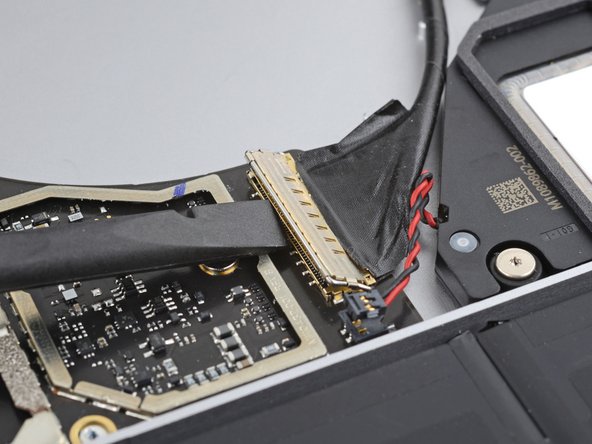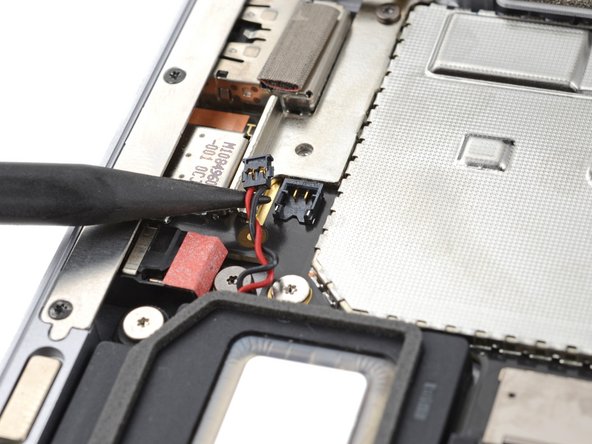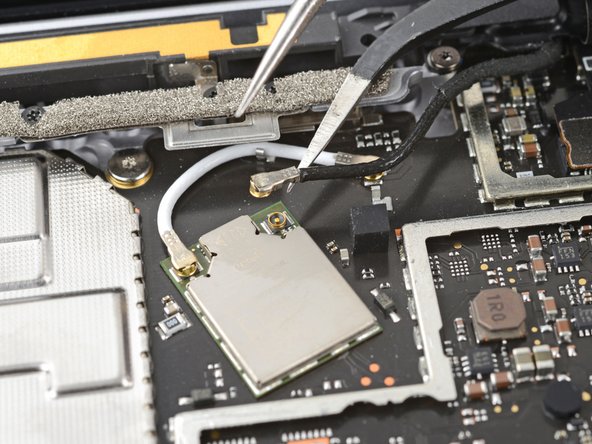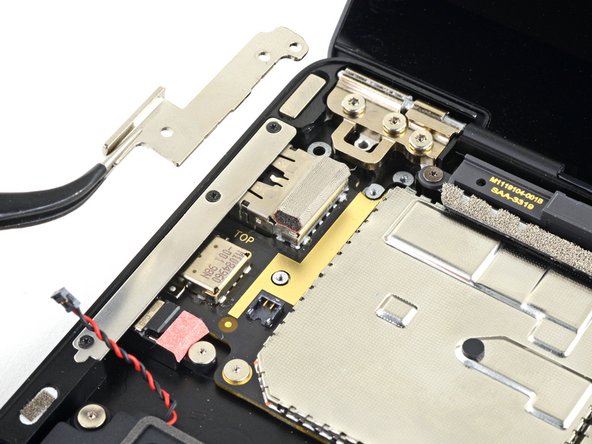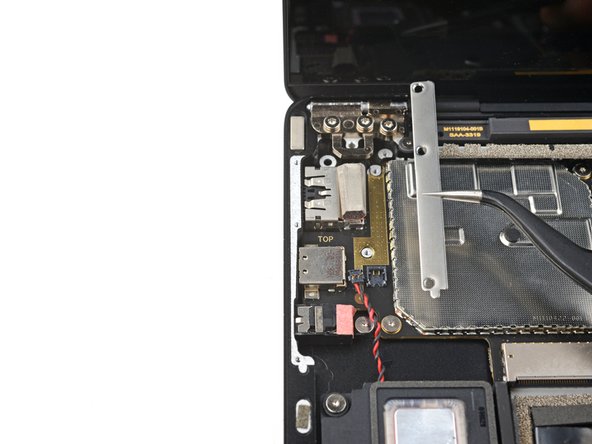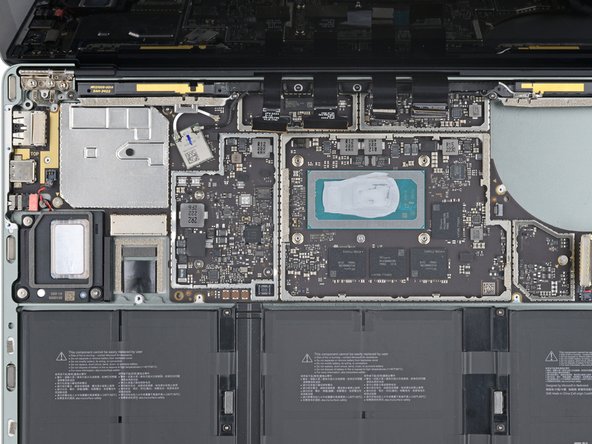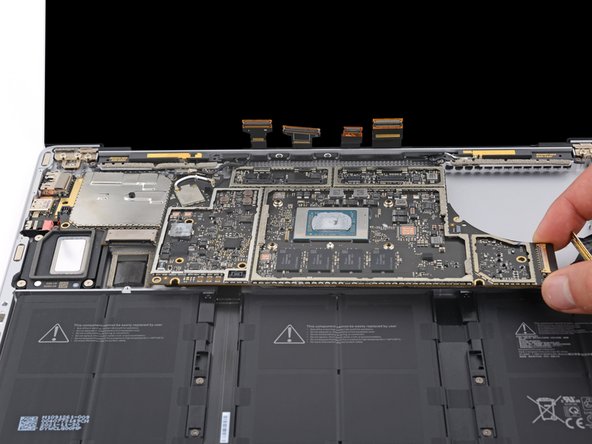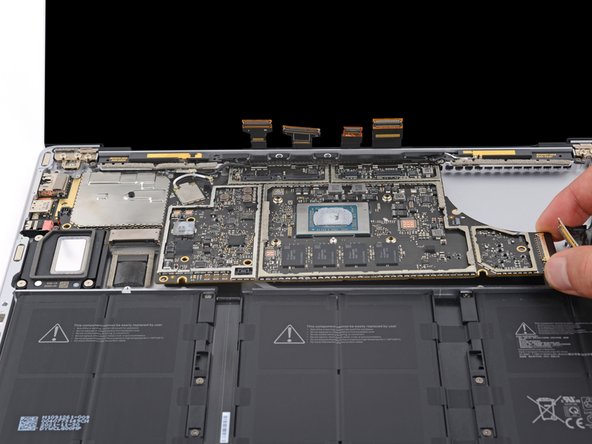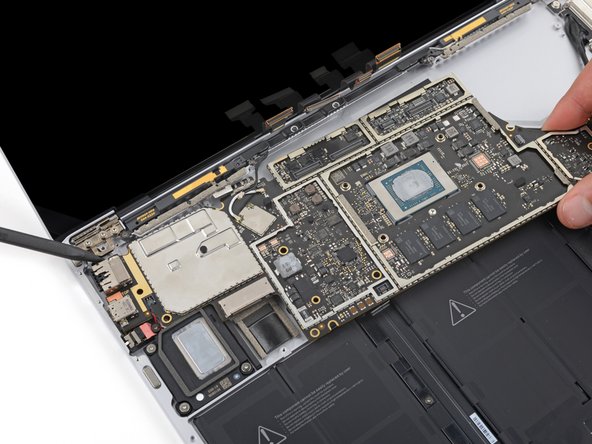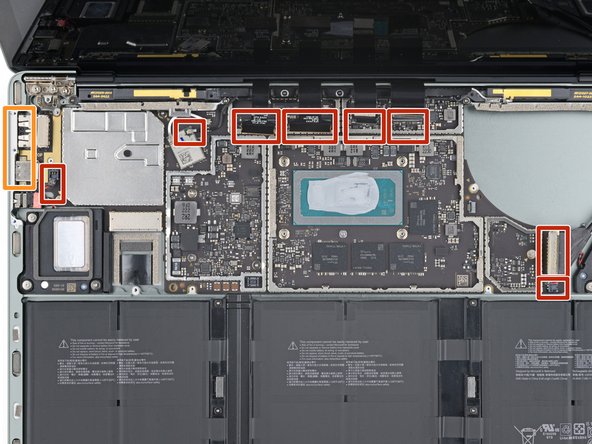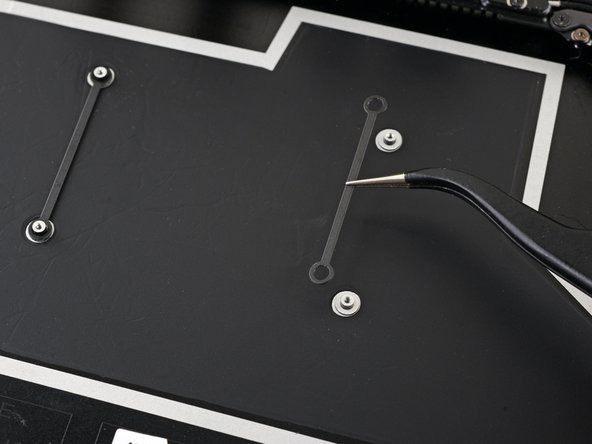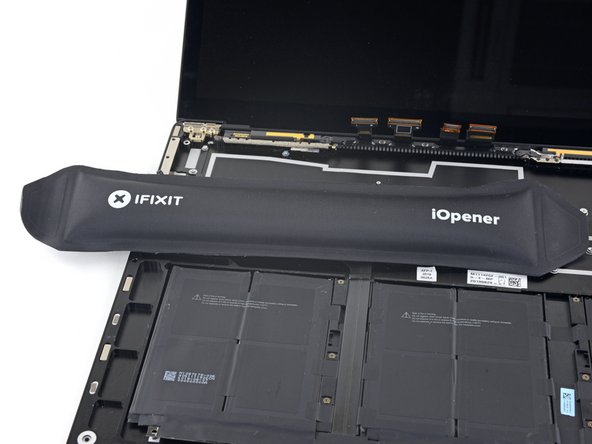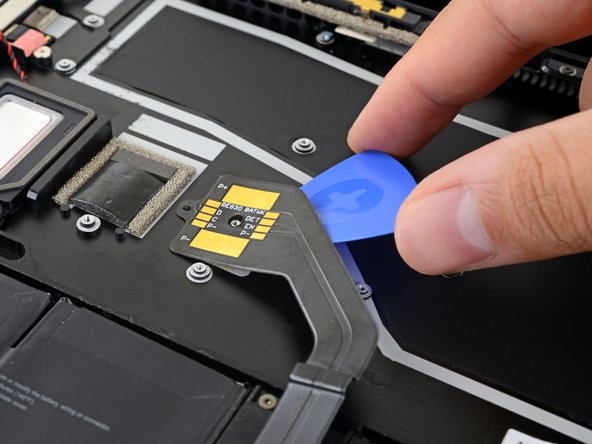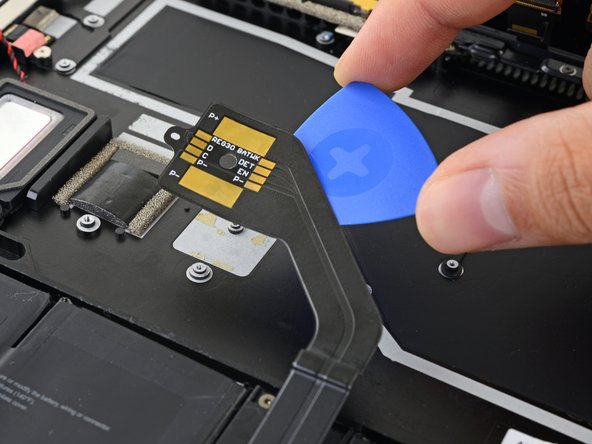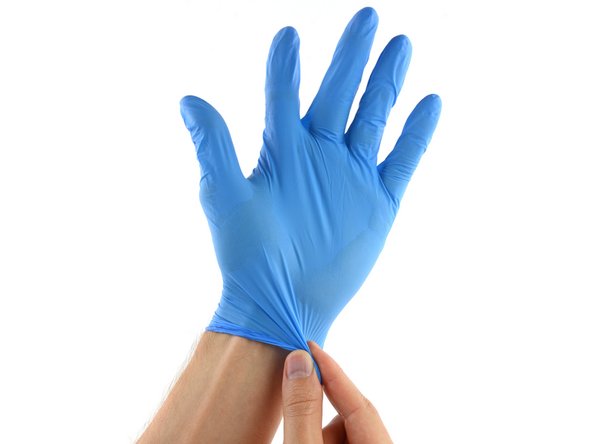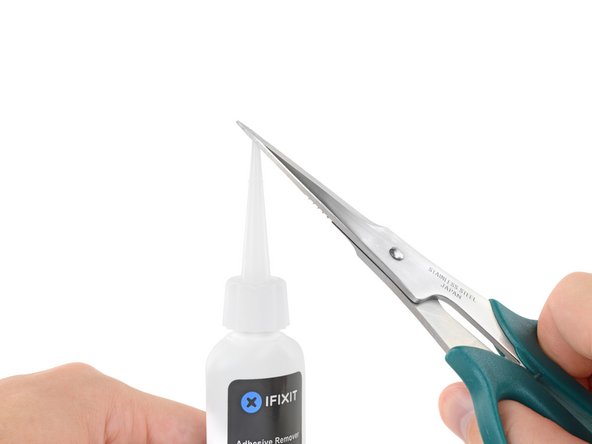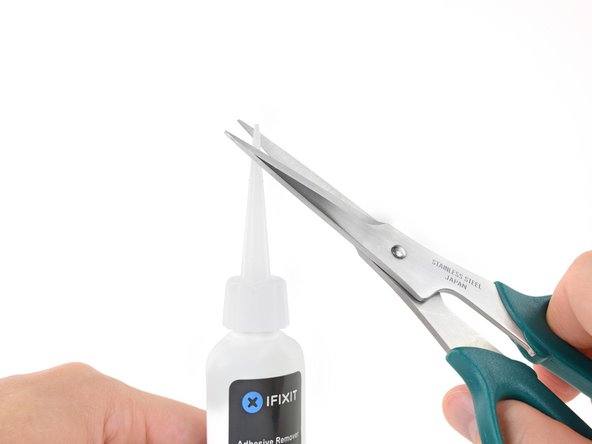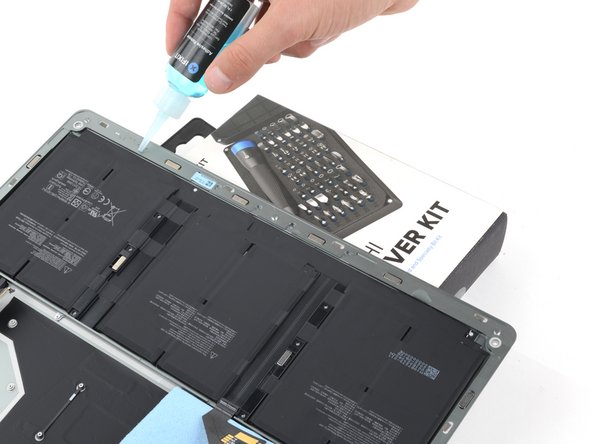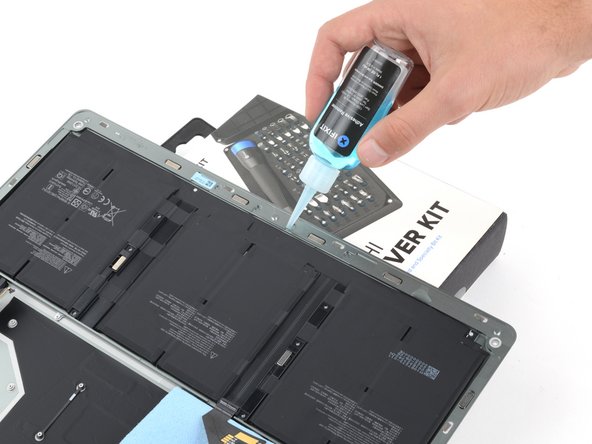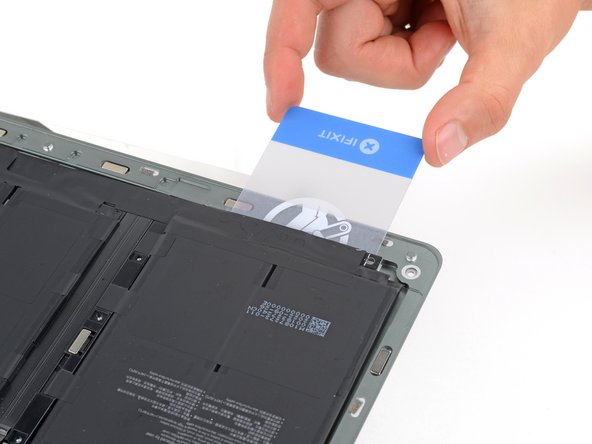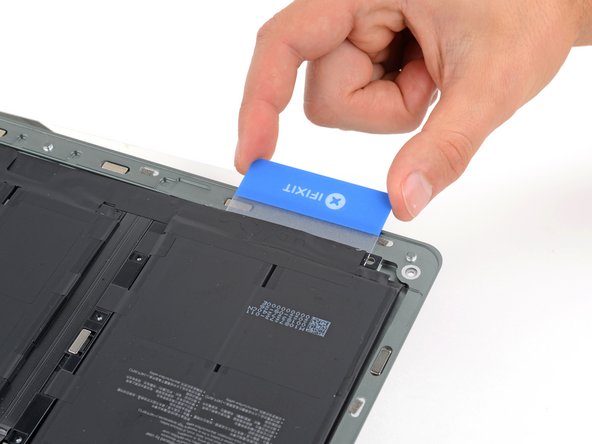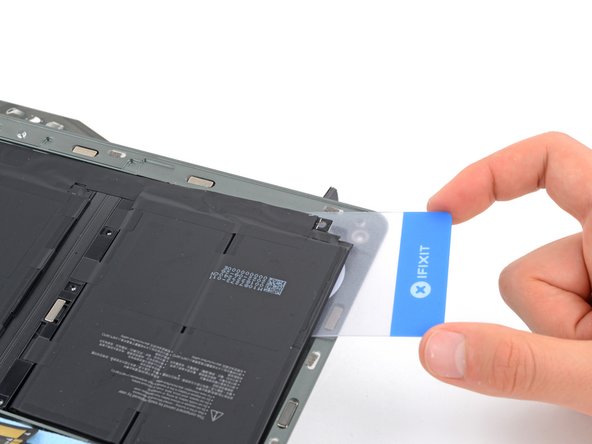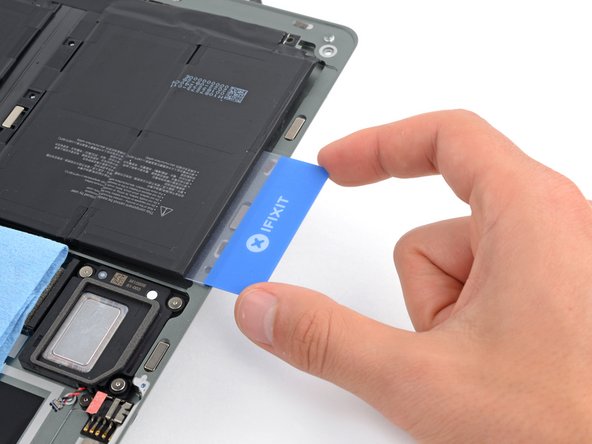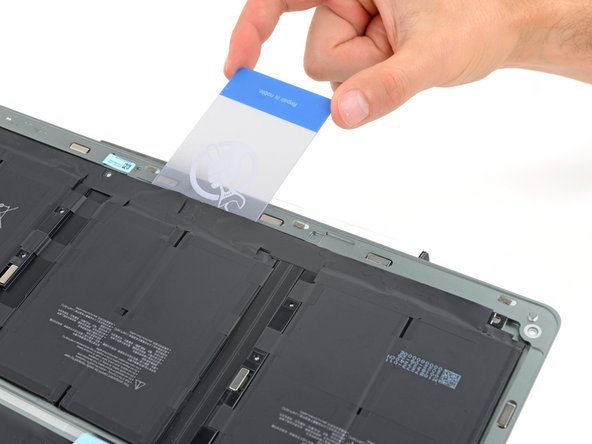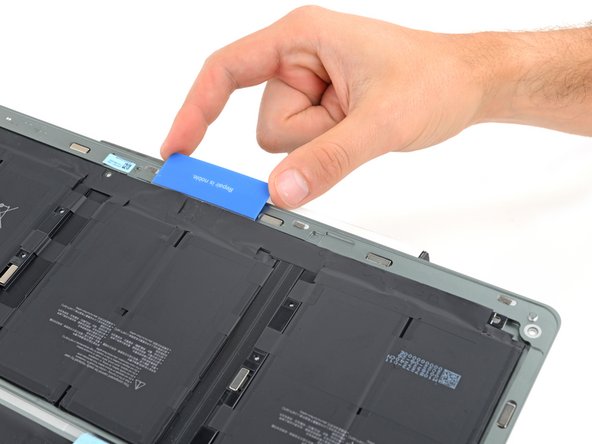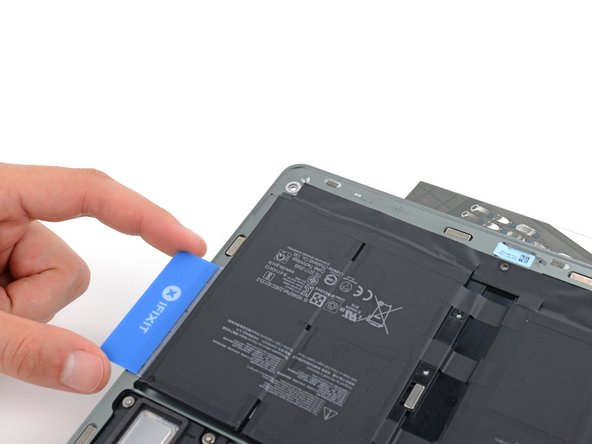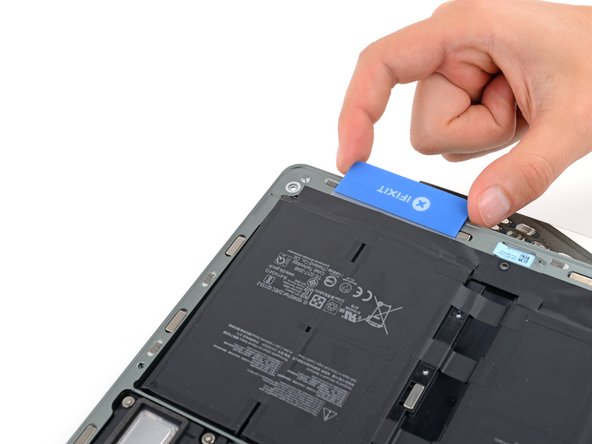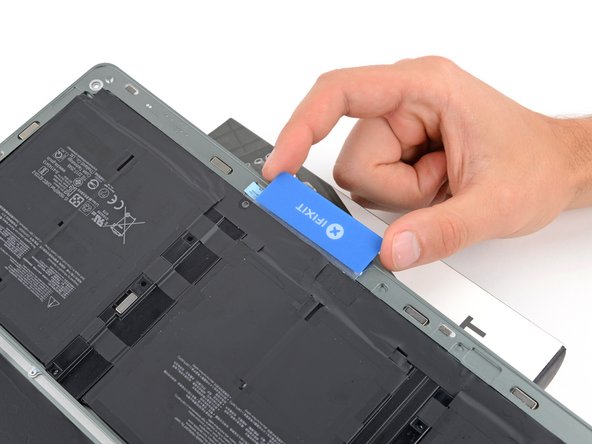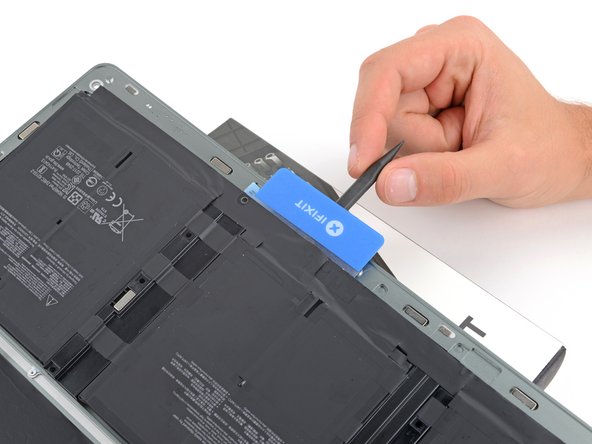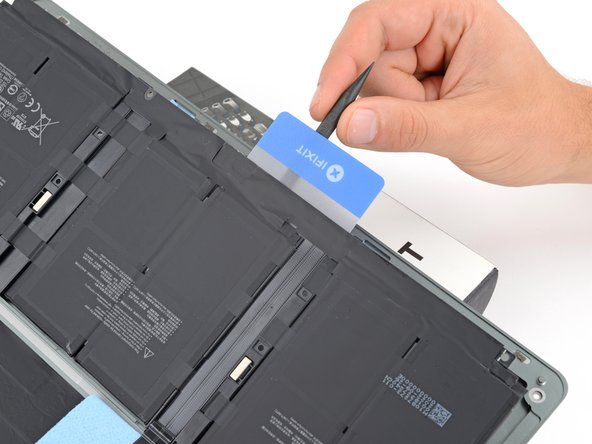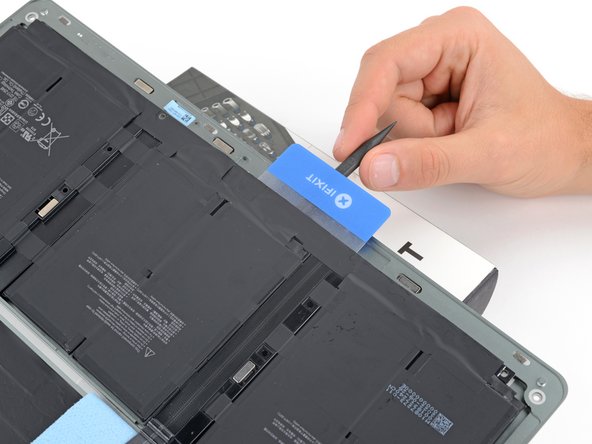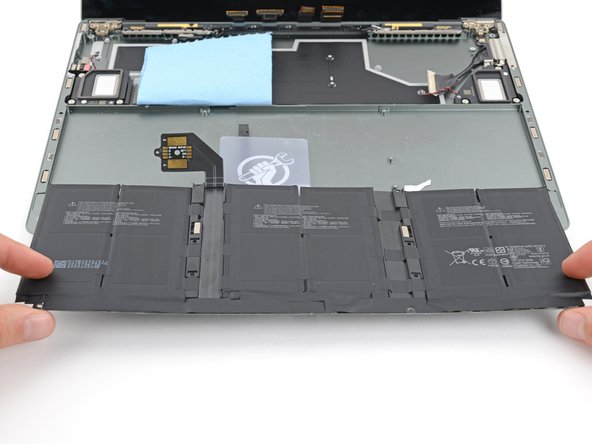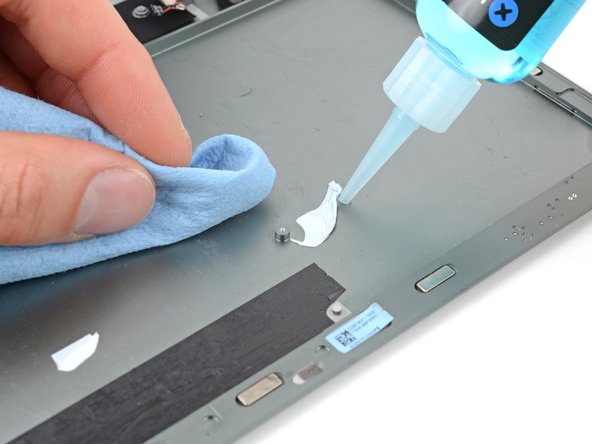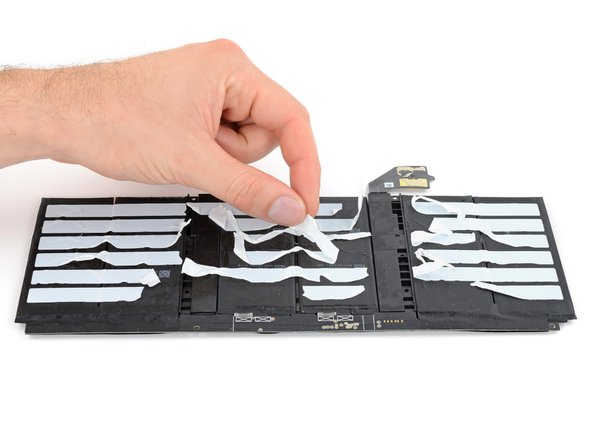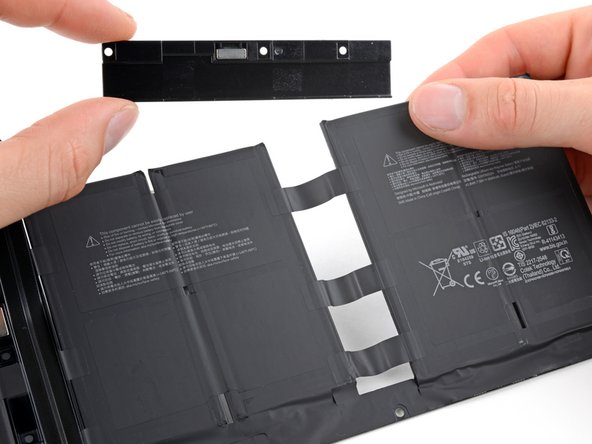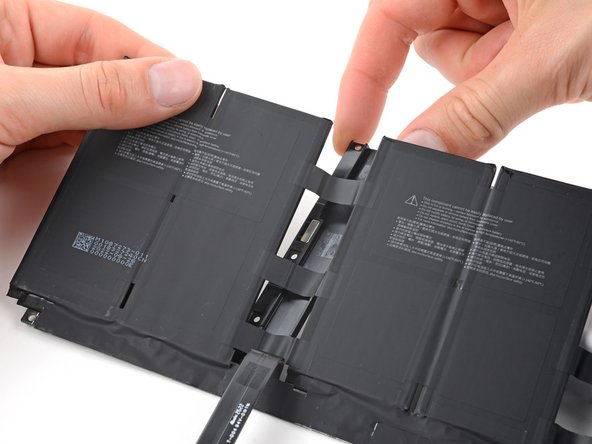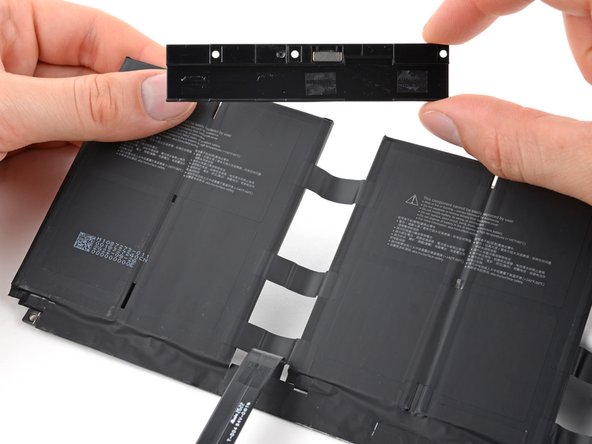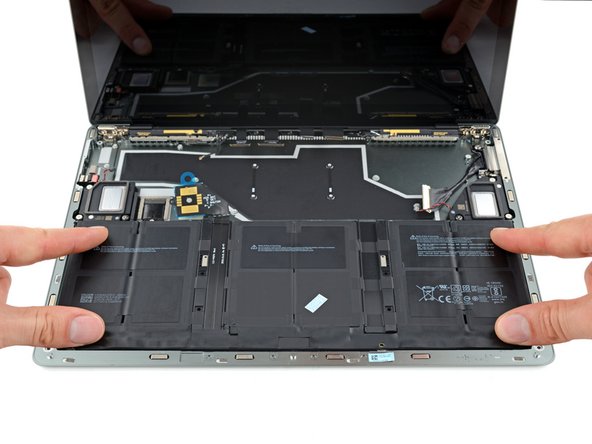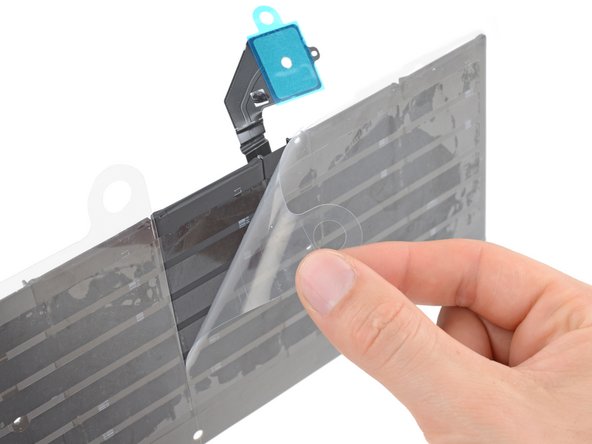DIY Microsoft Surface Laptop 5 13.5-inch Battery Replacement Guide
Duration: 45 minutes
Steps: 66 Steps
Ready to swap out your Microsoft Surface Laptop 5 (13.5-inch) battery? Follow this guide to get it done! If your battery is swollen, be cautious. You’ll need some fresh adhesive for the new battery, so grab some strong double-sided tape like Tesa 61395. Some photos here might be from a different model, but don’t sweat it—they won’t mess with the steps.
Step 1
Give your laptop’s battery a little vacation and let it dip below 25% before diving into this repair. A fully charged battery might throw a tantrum and catch fire if it gets hurt.
– First, let’s get your laptop ready for its makeover – unplug all cables and shut it down completely.
Step 2
– Flip your screen closed and place your laptop face down with the back case up, so you can reach the four rubber feet with ease.
Step 3
Each foot has a little groove designed to make it easier to pop off from the laptop. Just a gentle pry and you’re good to go!
– The recesses for the back feet hang out closest to the back edge of your laptop.
– The recesses for the front feet are chilling nearest to the front edge of your laptop.
Step 4
Watch out for those speedy little feet—they have a knack for disappearing!
– Slide one arm of your tweezers into the little groove of one foot.
– Give those tweezers a twist and gently pry upwards to break free the adhesive and release that foot from the laptop.
– Say goodbye to the foot and remove it from the scene.
– Now, just repeat this fun little dance with the other feet!
Tools Used
Step 5
– This laptop has two different types of feet. When putting it back together, be sure each foot finds its rightful spot.
– Press the feet firmly into place to secure them to the frame.
– The rear feet have a single center clip.
– The front feet come with three clips and only fit one way.
– If the feet won’t stick, remove the old adhesive and apply a small amount of Tesa Tape where the old adhesive was.
Step 6
– Got some beat-up or missing feet? No worries, grab some 8 mm rubber furniture pads to fix them up!
– Carefully peel a pad off its backing—it’s like opening a sticker, but way more useful.
– Line the pad up with the foot cavity (precision is key!), then press down firmly to lock it in place. Boom, you’re done!
Step 7
These screws can be a bit tricky! Make sure to keep a steady downward pressure to avoid any stripping mishaps.
As you tackle this repair, keep a close eye on each screw and make sure it finds its way back to its original home.
– Grab your T5 Torx driver and unscrew those four 3 mm screws holding the upper case in place—easy peasy, you’re doing awesome!
Step 8
– Turn your laptop upside down and open the screen all the way.
Step 9
Hey there! Just a friendly reminder: don’t go all out trying to yank off the upper case—it’s still hanging on by a cable.
Make sure the upper case is snug all around the edges. Any little gaps between the upper and lower case near the screen could lead to some screen drama when it closes.
The upper case is held snugly in place by magnets—pretty nifty, right?
– Grab the top edge of the upper case right above the keyboard and gently lift it straight up to pop it loose—nice and easy!
– Now, tilt up the bottom edge of the upper case and carefully move it away from the laptop. Watch out for that ribbon cable underneath—treat it like the superstar it is!
– When you’re putting it all back together, simply lower the upper case onto the lower case, letting the magnets do their thing until it clicks into place and lays flat. Smooth and satisfying!
Step 10
The cable that links the keyboard and touchpad to the laptop is like the lifeline of your upper case!
– Time to get started! Use the pointed end of a spudger to carefully pry the magnet connector loose from under its edge. Gently work it back and forth until it comes free.
– Now, let’s get that connector back in place. Align the magnet connector with its socket, making sure the cable is facing downwards towards the bottom of the laptop. Give it a gentle press to secure it firmly.
Tools Used
Step 11
– Take off the upper case and place it keyboard-side down on a nice, clean surface.
Step 12
Your SSD comes with some thermal paste that sticks to the upper case, kind of like a little adhesive buddy.
Alternatively, you can just apply a small bead of thermal paste right onto the SSD label. Go for the dot method and make the bead a little bigger than the screw head that’s holding the SSD in place.
– When you’re putting everything back together:
– Grab your trusty spudger and gently scrape off the old thermal paste from the top of the SSD and the underside of the upper case. Keep it clean, folks!
– Drip a few drops of 90% or higher isopropyl alcohol onto the SSD and upper case. Then, wipe off all that gunk with a lint-free or microfiber cloth—shine it up like new!
– Swap out the thermal pad with a fresh one that matches the size of the SSD sticker. Easy peasy!
Tools Used
Step 13
Once you’ve taken out that screw, the SSD will gracefully lift up at a slight angle, ready for its next adventure.
– Grab your T5 Torx driver and unscrew the 2.7mm screw holding that SSD in place. You’ve got this!
Step 14
Avoid yanking it up at a sharp angle; that could put a hurt on the SSD and its socket!
Popping out the SSD also doubles as a clever way to disconnect the battery.
– Gently wiggle the SSD out of its cozy little home and set it free.
– When it’s time to put everything back together, slide the SSD in at a fun little angle for a smooth fit.
Step 15
The left edge of the heatsink shield is secured to the heatsink with conductive tape.
– Warm up the tape with a heat gun or hair dryer to loosen up that sticky adhesive.
– Gently peel off the tape using tweezers or your fingers—no rush, take it slow.
– When it’s time to put everything back together, place the tape exactly where it was. If it’s being a bit stubborn, just give it another round of heat to help it stick to the heatsink.
Tools Used
Step 16
Be gentle with the shield; it doesn’t want to be bent out of shape! You’ll need it to snugly fit back in during reassembly.
– Slide the pointy end of your spudger into one of those little gaps on the top of the heatsink shield.
– Give it a gentle nudge to free those clips holding the shield in place.
– Now, do the same along the right edge.
– Slip one arm of your tweezers under the bottom right edge of the heatsink shield.
– Carefully lift up to release the remaining clips.
Step 17
– Time to take off that heatsink shield! Let’s get it out of the way.
– Now, when you’re putting that shield back on, just press down around the edges to snap those shield clips in place. Easy peasy!
Step 18
– Grab your trusty spudger and use its pointed end to gently lift the locking flap on the fan cable ZIF connector. You’re doing great!
– Now, take those tweezers and give the fan cable pull-tab a little grip, then smoothly pull the cable straight out of the connector. Easy peasy!
Step 19
– Grab your trusty T3 Torx driver and let’s tackle those nine screws holding the heatsink in place:
– Two 2.5 mm screws
– Two 2 mm screws
– One 3 mm screw
– Two 4.1 mm screws
– Two 3.4 mm screws
Step 20
– When putting everything back together:
– Place the heatsink on the motherboard, making sure it lines up with the centering peg.
– Tighten the four CPU tension screws in an ‘X’ pattern: top left, bottom right, top right, bottom left.
Step 21
This might require a bit of muscle! Just a gentle reminder to avoid bending those heat pipes.
The thermal paste is like a special kind of glue that helps the heatsink stick to the CPU, keeping it cool and happy!
– Slip your spudger under the left heat pipe.
– Lift to free the left part of the heatsink.
– Do the same for the right heat pipe and the CPU screw mounts until the heatsink is completely free from the motherboard.
Tools Used
Step 22
– Gently pick up the heatsink and fan, lifting it off the alignment peg sitting in the upper right corner—nice and easy now!
– Now, slide that heatsink and fan toward the laptop’s front edge and whisk it away like a pro.
Step 23
– Before reinstalling the heatsink, make sure to give the heatsink and CPU a good clean and reapply thermal paste. Your gear deserves some love too!
Tools Used
Step 24
Be gentle with the shield—try not to bend it too much. You’ll need it later when you’re putting everything back together.
– Slide one arm of your tweezers under the edge of the left display cable shield.
– Gently lift to pop the clips that are holding the shield in place.
– Keep going around the edges of the shield until it’s free and ready to be removed.
Tools Used
Step 25
– Time to set that display cable shield free! Gently pull it away from the screen to release it from its cozy little recess.
– Now, go ahead and remove the shield – you’re making great progress!
Step 26
– Now, let’s tackle the right display cable shield! Just like before, repeat those last two steps to get it off. You’ve got this!
Step 27
Some screws on the motherboard like to play hide and seek under two metal shields. You’ll need to gently lift these shields off to access them.
Be gentle with the shields—no need to give them a workout! You’ll want to put them back on during reassembly, so treat them kindly.
– Start by slipping one arm of your tweezers under the corner of the left touchpad shield.
– Gently pry it up, working to release the clips holding the shield in place.
– Keep repeating this process around the edges until the shield pops off easily.
Tools Used
Step 28
– Let’s get that left motherboard shield off! It’s time to unveil the inner workings of your device. Just gently remove it and reveal the magic underneath.
Step 29
Sometimes there’s a bit of thermal paste hanging out between the motherboard and the left shield—don’t let it surprise you!
– Before you pop that left motherboard shield back on, let’s take a moment to tidy things up! Follow this guide to clean off the old thermal paste and apply some fresh stuff. Your device will thank you for it!
Tools Used
Step 30
– Use your tweezers to gently slide one arm under the corner of the right motherboard shield. Pry around the edges to loosen those clips and free it up.
– Once it’s all loose, carefully remove the right motherboard shield.
Tools Used
Step 31
– As you put everything back together, take the flat end of your trusty spudger and gently nudge those display cables back into their cozy spot in the lower case after reconnecting the press connectors. You’ve got this!
Tools Used
Step 32
To reattach those connectors, gently align them and press down on one side until you hear that satisfying click. Then, do the same on the other side. Remember, no pressing in the middle! If things get misaligned, those little pins can bend and that’s a one-way ticket to permanent damage. You’ve got this!
– Grab your trusty spudger and gently slide the flat end underneath the display cable press connectors. With a little finesse, pry them up and disconnect all four like a pro!
Tools Used
Step 33
– Grab your trusty spudger and gently use its pointed end to lift and disconnect the right speaker wire from its cozy little connector on the motherboard. You’re doing great!
Tools Used
Step 34
– Take the flat end of a spudger and gently pop open the locking arm on the Surface Connect port connector—like opening a secret treasure chest.
– Firmly grab the Surface Connect port cable and pull it straight out of the socket—no twisting or fancy moves needed.
Tools Used
Step 35
– Gently use the pointed end of a spudger to lift the left speaker wire off its connector near the left ports. Take your time, and remember – a little patience goes a long way!
Tools Used
Step 36
– Slide the tip of your tweezers gently under the black antenna connector, getting as close to the head as possible.
– Lift it up smoothly to disconnect the cable.
– To reconnect the antenna, line up the connector’s head with its socket and give it a little press with the flat end of a spudger. You’ll feel it click right into place!
Step 37
– Grab your trusty T3 Torx driver and remove those two 3mm screws holding the motherboard bracket in place.
Step 38
Step 39
– Grab a T3 Torx driver and unscrew the three 2.1 mm screws holding the left port cover in place.
Step 40
– Pop off the left port cover like a pro!
Step 41
If your screws are sporting any rubber covers, go ahead and peel those off with a little finesse.
– Grab your T3 Torx driver and pop out those six 2 mm screws holding the motherboard in place. You’ve got this!
Step 42
The left side of the motherboard is snugly held in place by the port cutouts, the speaker, and the frame. It’s all about that perfect fit, so be sure to keep them in mind as you move forward.
– Gently tilt the right side of the motherboard up and over the battery—just enough to give it some air to breathe.
– Keep a steady hand on that motherboard while you work your magic to free up the left edge. You’re almost there!
Step 43
There’s a little tab on the upper left side of the motherboard that is snugly pressing against some bumps in the frame, keeping that left edge firmly in place.
If you’re having trouble lifting the motherboard over the left speaker, that tab might still be holding on for dear life. Give your spudger a new angle and give it another go!
– Slide the tip of your spudger into the tab in the top left of the motherboard. Use the spudger to gently nudge between the frame and the screen hinge.
– Lift the tab with your spudger while you ease the right side of the motherboard forward and up toward the front of the laptop.
Tools Used
Step 44
Keep an eye on those two screwpost braces under the motherboard so they don’t wander off during removal.
– Alright, time to pop that motherboard out of there—nice and easy!
– When you’re putting it all back together:
– Keep an eye on those eight cables—don’t let them get squished or stuck underneath.
– Line up those left-side ports into their cozy little slots before sliding the motherboard back into place like a puzzle piece.
Step 45
A hair dryer or heat gun can also do the trick!
– Warm up an iOpener and place it snugly over the battery contact cable for about a minute to loosen things up.
Tools Used
Step 46
If the adhesive is being a bit stubborn, don’t sweat it! Warm it up again and give it another shot—patience is key!
– Gently slide an opening pick beneath the battery cable and give it a little nudge to pop it free from the frame.
– Now, as you get ready to put everything back together:
– If your battery cable has a plastic liner, go ahead and take it off. If not, grab some double-sided tape and stick it to the bottom of the cable.
– Align the cable with its screw post and alignment peg, then press down firmly to secure it to the frame.
Step 47
– Grab your trusty T3 Torx driver and get ready to tackle those six 2.7 mm screws holding the battery spacers snugly to the frame. You’ve got this!
– When it’s time to put everything back together, feel free to skip this step if your battery spacers are already in place. Easy peasy!
Step 48
iFixit adhesive remover has acetone in it, which can be a bit of a bother for your skin and eyes. So, let’s handle it with care, shall we?
Get ready to tackle those sticky spots! We’ll be using adhesive remover for the next few steps. If you’re feeling adventurous, you can opt for isopropyl alcohol (90% or higher), but be warned—it’ll take a bit longer to get the job done.
– Rock those safety glasses while handling and applying the adhesive remover – your eyes will thank you!
– Skip the contact lenses for this step – they don’t mix well with eye protection.
– Put on those protective gloves to keep your skin happy and irritation-free.
Tools Used
Step 49
Before you get started, make sure to loosen or remove that bottle cap – we don’t want any accidents!
Time to move on! Just remember to tighten up that bottle cap securely before heading to the next step.
Don’t skip this step, or you might end up with adhesive remover spraying everywhere when you cut the tip. Popping the seal on the bottle balances the pressure before you trim the applicator tip.
Snip close to the tip so you can apply the adhesive remover in small, controlled amounts.
– Grab your bottle of adhesive remover and hold it upright, then pop off that black rubber stopper like a pro!
– Take some scissors and snip off the sealed tip of the applicator. Easy peasy!
Step 50
Heads up! Adhesive remover might mess with your laptop components.
– Pop a paper towel right under the battery contact cable to catch any extra adhesive remover that might sneak through its little cutout. We want to keep things tidy while we work our magic!
Step 51
– Gently lift the front edge of your laptop just a bit to let the adhesive remover sneak under the battery.
Step 52
– Squeeze out a few drops of adhesive remover and gently spread them under the lifted edge of the battery cells.
– Now, kick back and relax for a couple of minutes while the adhesive gets nice and soft.
Step 53
Be sure not to poke or bend the battery – it could release nasty chemicals or even cause a fire.
The battery is held in place by several layers of adhesive. If the battery seems a bit stubborn, don’t stress! Just add a few more drops of adhesive remover and give it a couple of minutes before you dive back in.
– Gently slide a plastic card under the raised edge of the left battery cell to get things started.
– Glide the card beneath the battery to loosen up the sticky adhesive holding it down to the frame. Take it slow and steady!
Step 54
– Gently glide your plastic card along the outer corner of the left battery cell, like you’re slicing through air—nice and smooth!
Step 55
– Gently slide your trusty plastic card under the outer edge of the left battery cell and give it a little wiggle to free it from the frame. You’ve got this!
Step 56
Be gentle with the battery board when sliding in your card! If you go at it with too much force or from an awkward angle, you might end up with a snap instead of a smooth insertion.
– Slide your plastic card gently under the battery board so it’s cozy in there.
– Keep that trusty card beneath the battery board and give it a little slide towards the middle cell.
– Now, slide your card under the middle battery cell to break free the adhesive holding it to the frame.
Step 57
Be careful not to twist or warp the battery or its board, alright? Let’s keep everything nice and straight!
– Use the same technique you applied to the left battery cell to carefully peel away the adhesive from the right battery cell.
Step 58
If your spacer is still stuck like it’s on a first date with the frame, grab an opening pick or spudger and gently nudge it up just enough to slide that plastic card underneath. You’re doing great!
– Gently slide your trusty plastic card beneath the right battery spacer, right along the inner edge of those screw posts in the frame.
– Now, take your spudger and carefully slip it under that plastic card, giving it a gentle lift to break free the adhesive that’s keeping the battery spacer snug against the frame.
Tools Used
Step 59
If any part of the battery seems to be sticking to the frame, take a moment to check for any leftover adhesive. A gentle slice with your plastic card should do the trick, helping you move forward with ease.
– Take your trusty plastic card, shimmy it under the left battery spacer, and give it a gentle nudge with your spudger to pop it loose.
Tools Used
Step 60
– First, carefully remove the battery from its cozy little home in the device.
– Next, bust out the big guns – use some adhesive remover or highly-concentrated isopropyl alcohol (we’re talking over 90% here) to loosen any stubborn residue on the frame. This will make the next step a whole lot easier.
– Now it’s time to get wiping! Use a microfiber or lint-free cloth to gently remove the residue from the frame. You’re making great progress!
Step 61
If your shiny new battery comes with spacers, you’re all set for installation—just jump right to this step! If it doesn’t, no worries! Follow the next four steps to transfer those spacers to your frame like a pro.
– Before you pop in that shiny new battery, make sure those little spacers are snugly in place between the cell groups. It’s a small step, but it makes a big difference in keeping everything running smoothly!
Step 62
You don’t have to scrape off all the leftover adhesive—just focus on the strips sitting on top of the spacers.
– Turn your battery around and find those little spacers nestled between the cell groups.
– Gently use your fingers to peel off any sticky adhesive strips from around the battery spacers.
Step 63
– Lift up those battery cell groups on either side of the right spacer like you’re giving them a little high-five!
– Gently peel the spacer away from the strips of tape that are connecting the cell groups, as if you’re unwrapping a surprise gift.
– Now, go ahead and remove the spacer. You’re doing great!
Step 64
If that pesky left battery spacer is giving you a hard time, just tuck the battery contact cable aside for now.
– Carefully peel away the left spacer from the tape strips that are holding the left cell groups together and toss it aside.
Step 65
– First things first, make sure the battery spacers are oriented with their screw holes facing outward. You’ve got this!
– Now, grab your trusty T3 Torx driver and get ready to secure those spacers by installing six 2.7 mm screws. Let’s make sure everything is snug and ready to go!
Step 66
– Take a quick moment to compare your new part to the original—it’s a great chance to transfer any leftover bits or peel off adhesive backing before popping it in.
– Follow these instructions in reverse to put your device back together—it’s like hitting rewind, but for tech!
– Want to get the most out of your shiny new battery? Calibrate it after reassembly for peak performance.
– Be kind to the planet! Drop off your e-waste at an R2 or e-Stewards certified recycler.
– Did things get a little tricky? Try troubleshooting the basics, or swing by our Answers community for a helping hand.
– Decided not to finish? That’s okay—every repair journey teaches something new.
– Need a pro’s touch? If you’re stuck, you can always schedule a repair.
Success!













